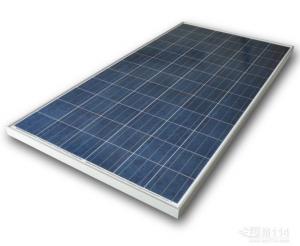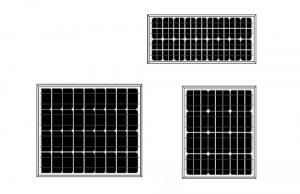Solar Panels for Shed Power - Polycrystalline 130W for Small Solar Systems
- Loading Port:
- Shanghai
- Payment Terms:
- TT OR LC
- Min Order Qty:
- 10000 PCS
- Supply Capability:
- 50000000 PCS/month
OKorder Service Pledge
OKorder Financial Service
You Might Also Like
Product Description
Solar Polycrystalline Series Panels
Introduction of Polycrystalline Solar Panels
We are registered in the state of Texas, USA. It holds a rich heritage in Alternative Energy and Smart Grid technology with global project expertise in North America, Europe, South America, China and SE Asia since 2002. We offer integrated solar PV and Small wind turbine for domestic, agriculture and commercial domain which is a 100 billion industry in North America alone.
We delivers turn-key clean energy solution, with its most advanced and patented unique off-grid PCU which make our system a mini solar power plant and not just an inverter. Our products are committed towards all global quality norms and parameters as they exceed 98.5% efficiency and also bundled with an unparallel technologies namely shroud in the small wind turbine sector has a PLF of 45% with an unbelievably less weight, low noise and aesthetic appearance and polycrystalline solar pv cells for roof tops matching almost 95% of mono-crystalline solar pv cells.
We have a current global installed capacity of 4092 MW with 592 MW installed during the year 2012 alone.
Characteristics of Polycrystalline Solar Panels
I Solar Cell : High efficiency crystalline solar cell. Even if under the weak light, the solar module can produce maximum power output.
II Tempered glass (toughened glass): Anti-reflecting coating and high transmission rate glass increase the power output and mechanical strength of solar module.
III EVA and TPT: Using high quality EVA and TPT to prevent destroying and water.
IV AI frame: Without screw, corner connection. 6 holes on the frame can be installed easily.
V Junction box: Multi function junction box with water proof.
VI Long lifetime: ≥25 years; Less power decrease
VII Good performance of preventing from atrocious weather such as wind and hails.
VIII Resisting moisture and etching effectively, not effected by geology.
Standard Test Conditions of Polycrystalline Solar Panels
The opto-electrical specifications shown below are stabilized values being measured at Standard Test Conditions, Irradiance: 1000W/m2, Spectrum: AM1.5 at 25°C, The info below is subject to manufacturing tolerances. Where appropriate minutes of measurement are available and are used for the dimensioning of the installation.
Advantages of Polycrystalline Solar Panels
1.High reliability with guaranteed -3% to +5% power output tolerance, ensuring return on investment
2. High conversion efficiency based on leading innovative photovoltaic technologies
3. Withstands high wind-pressure and snow load, and extreme temperature variations
4. Attractive appearance Unique frame design, high mechanical strength, and easy Installation
Characteristics of Polycrystalline Solar Panels
Max Power Voltage Vmp (V) | 17.6V | 17.4 V |
Max Power Current Imp (A) | 6.82A | 6.33A |
Open Circuit Voltage Voc (V) | 22.6V | 22.4V |
Short Circuit Current Isc (A) | 7.26A | 6.87A |
Max Power Pm (W) | 120W | 120W |
Temperature Coefficient of Cells
NOCT | 47℃±2℃ |
Temperature Coefficients of Isc (%/℃) | 0.06 |
Temperature Coefficients of Voc (%/℃) | -0.33 |
Temperature Coefficients of Pmp (%/℃) | -0.45 |
Mechanical Data Solar Polycrystalline Series
Power | 120W/120W |
Dimension | 1219×670×30mm/1120×670×30mm |
Weight | 7.7 kg/8.4kg |
Tolerance | ±3% |
The dimension of the modules can be changed according to the demand of clients Limits.
Operating Temperature | –45 °C to +80°C |
Storage Temperature | –45 °C to +80°C |
Max System Voltage | 700V |
Guarantee Solar Polycrystalline Series Panels
Products Guarantee | 2 years free from defects in materials and workmanship |
Performance Guarantee | No less than 90% within 10yrs and no less than 80% within 25yrs |
Certificates | IEC, ISO, TUV, CE |
Dimension of Solar Polycrystalline Series Panels


FAQ
We have organized several common questions for our clients,may help you sincerely:
1. What’s price per watt?
A: It’s depends on the quantity, delivery date and payment terms of the order. We can talk further about the detail price issue. Our products is high quality with lower price level.
2. Can you tell me the parameter of your solar panels?
We have different series of cells with different power output, both from c-si to a-si. Please take our specification sheet for your reference.
3. How do you pack your products?
We have rich experience on how to pack the panels to make sure the safety on shipment when it arrives at the destination.
4. What is your warranty system?
Our product performance guarantees for 25 years
• 12 years guarantee for workmanship
• Timeliness of delivery
• Quality Products certified (TÜV, UL, CE, ISO)
5. How do you pack your products?
We have rich experience on how to pack the panels to make sure the safety on shipment when it arrives at the destination.
- Q: Can solar panels be installed on a factory or manufacturing plant?
- Yes, solar panels can be installed on a factory or manufacturing plant. In fact, many industrial facilities are opting for solar panel installations to generate clean and renewable energy. The large roof spaces available in factories are particularly suitable for accommodating solar panels, which can help reduce electricity costs and carbon emissions while promoting sustainability.
- Q: For a computer technology project we are using solar panels and trying to see different methods that will increase the output of solar power from these panels. For now, we have got polymer stickers and mirrors. Are there any more methods, or information that increase the solar power? Please and thank you :)
- I am a senior in highschool and one of my classmates is basically a genius by all means that I can tell. He has already been accepted yo UNC Chapel Hill. His admissions statement was on exactly this subject. I proof read it for him. Anyways the basic problem with solar energy is that we can only harness about 20- 35 pecent of the energy and even less of that is converted into energy that can acutally be used. His argument is that if somehow we could harness chloraphyll which is the chemical which plants use to harness the suns energy and incorporate it somehow into our solar panels. We could harness up to 95% of the suns energy!!! Id deffinately look into this.
- Q: Thanks
- Initial cost , space occupied AND DAILY CYCLE (unless through a battery) are the only disadvantages. REST ARE ALL ADVANTAGES
- Q: My electric bill per month averages 800 kWh per month. I am looking at 65W solar panels. How many panels would I need to make my bill come to zero? I realize I also need an inverter to convert dc to ac.
- I like TBS0's answer, but 5KW isn't going to hack it. We don't live life on the average. If you turn on the oven, the dryer, the iron, a bunch of lights, and the TV, you are going to shut the system right down. You should not count on running everything with solar cells, but the most critical circuits. And you are lucky to have 25% of a day in optimum solar alignment for photocells. You need to think outside the Al Gore crazy box. Our modern way of life requires a lot of power! If you switched to coal or wood for cooking and heating and ironing, sunshine for drying clothes, heating the hot water heater, and for daytime lighting, then you could use the photocells for some lighting and the washing machine and anything electronic. You might stand a chance.
- Q: The battery is 9ah and the solar panel is 20w
- Yes, certainly. So long as the solar panel's voltage exceeds the voltage of the battery (which is probably going, certainly if it can be a discharged battery, which is lower than 2 volts), then it will recharge the battery. Additionally, a 2 V solar panel can produce bigger than 2 volts. Nevertheless, the rate of charging is more likely to be depdendent on the availabilty of daylight. And of course, the better the capcity of the battery, the longer it takes to cost.
- Q: Can solar panels be installed on senior living facilities?
- Yes, solar panels can be installed on senior living facilities. Installing solar panels on senior living facilities can help reduce energy costs, promote sustainability, and provide clean and renewable energy for the facility. It can be a beneficial and cost-effective solution for senior living facilities to meet their energy needs while also contributing to a greener environment.
- Q: Installing solar panels requires a big initial investment. Before I make this investment I want to check to see if the money I will save by installing solar panels will actually pay for this investment, in the long run. To calculate my savings, we should consider the area (square feet) I currently have available to install solar panels. Look at the available sunlight and its intensity in my state each month of the year. Based on this data estimate how much energy my solar panel will generate. Then compare that with how much energy (kWh) I currently consume based on my electricity bill.
- Your school spend $0,000 per month or per year?? Photovoltaic (Solar Panel) panels have a really large initial capital investment. If you live in a location (e.g. West Coast Desert, SoCal) where there are many sunny days so you might be able to break even quicker. Also note ,there are state and federal grants that can help ease the capital cost. Energy demand keeps going up so expect our current rates to double. People who have alternative forms like wind and solar will have the advantage when this time comes. Just think of when the US had it's oil crisis in summer of 2008, people with small efficient vehicles such as Prius's didn't feel the price increase like the people who bought cheaper large SUV's.
- Q: Can solar panels be installed on a multi-story building?
- Yes, solar panels can be installed on a multi-story building.
- Q: Can solar panels be installed on a school or educational institution?
- Yes, solar panels can be installed on a school or educational institution. In fact, many schools and educational institutions are increasingly adopting solar energy as a sustainable and cost-effective solution for their power needs. Solar panels can be installed on rooftops, parking lots, or open areas to generate clean electricity, reduce carbon emissions, and provide educational opportunities for students to learn about renewable energy.
Send your message to us
Solar Panels for Shed Power - Polycrystalline 130W for Small Solar Systems
- Loading Port:
- Shanghai
- Payment Terms:
- TT OR LC
- Min Order Qty:
- 10000 PCS
- Supply Capability:
- 50000000 PCS/month
OKorder Service Pledge
OKorder Financial Service
Similar products
Hot products
Hot Searches
Related keywords




























